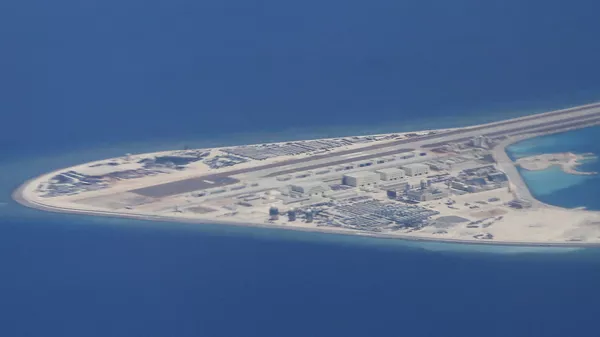Assistant Secretary of State for the Bureau of East Asian and Pacific Affairs David Stilwell is apparently under the assumption that once an international body has ruled against a nation, that nation is permanently barred from taking part in said body. During an online event hosted by the hawkish Center for Strategic and International Studies (CSIS) think tank, he argued that allowing a Chinese official to sit on the International Tribunal on the Law of the Sea is like “hiring an arsonist to help run the fire department.”
“Like the Arbitral Tribunal that ruled against Beijing in 2016, the International Tribunal is established under the UN Convention on the Law of the Sea. Electing a PRC official to this body is like hiring an arsonist to help run the Fire Department,” Stilwell said during the Tuesday livestream.
“We urge all countries involved in the upcoming International Tribunal election to carefully assess the credentials of the PRC candidate and consider whether a PRC judge on the Tribunal will help or hinder international maritime law.”
The election is slated for either August or September, and Beijing’s candidate is so far running uncontested.
The diplomat’s remarks come just days after the US State Department published its first official repudiation of Beijing’s claims to territory in the South China Sea. While US Secretary of State Mike Pompeo denounced Chinese claims of wider control over the waterway, he seemed to accept China’s claims to control some islands in the waterway, such as the Spratly Islands.
However, the US Navy also currently has more than 10,000 sailors in the South China Sea, where it’s positioned two aircraft carriers and their associated strike groups to carry out combat drills. It has also majorly increased flights by surveillance and maritime strike aircraft over the area.
In 2016, the Permanent Court of Arbitration struck down China’s claims summarized in the “Nine-Dash Line” that encompassed roughly 90% of the South China Sea. Both China and Taiwan rejected the ruling, but the other four nations with claims on the waterway - Vietnam, the Philippines, Brunei and Malaysia - accepted it.
The following year, Beijing introduced the “Four-Sha” (four sands) argument, which laid claim to four island chains - the Paracel Islands (Xisha), Spratly Islands (Nansha), Pratas Islands (Dongsha) and the Macclesfield Bank (Zhongsha) - and their surrounding areas of raised seafloor, together amounting to about 80% of the South China Sea. This past April, the Chinese Ministry of Civil Affairs website released a list of dozens of Chinese names for undersea formations included in the claims.
This graphic outlines the "Four Sha" argument China has used to justify its #SouthChinaSea claims since 2017. It's based on 4 raised seafloor areas instead of the ill-defined "Nine Dash Line." pic.twitter.com/2hG1CeFmmq
— Morgan Artyukhina (@LavenderNRed) July 15, 2020
The position of the Association of Southeast Asian Nations (ASEAN) has been twofold: while on the one hand, the recent ASEAN summit hosted by chair nation Vietnam produced a reaffirmation of the 1982 UN Convention on the Law of the Sea as “the basis for determining maritime entitlements, sovereign rights, jurisdiction and legitimate interests over maritime zones,” just days later, ASEAN and Beijing announced they were resuming negotiations aiming to create a Code of Conduct of Parties in the South China Sea. Such a document would settle many of the outstanding concerns about the legality of certain watercraft traveling in certain parts of the sea.
At the time, the People’s Liberation Army Navy was carrying out military drills near the Paracel Islands, which both China and Vietnam claim as their own.





